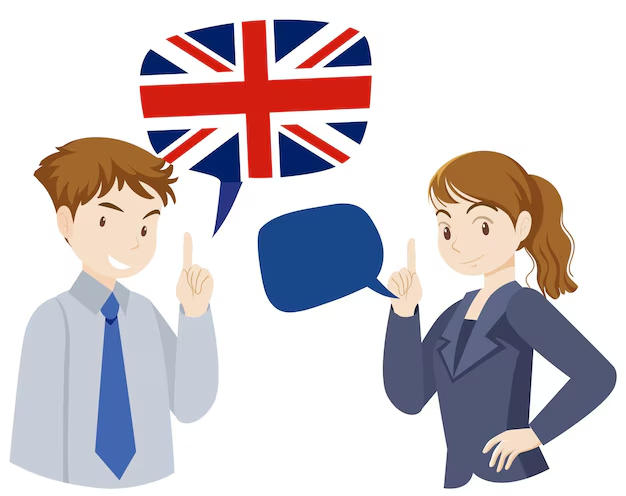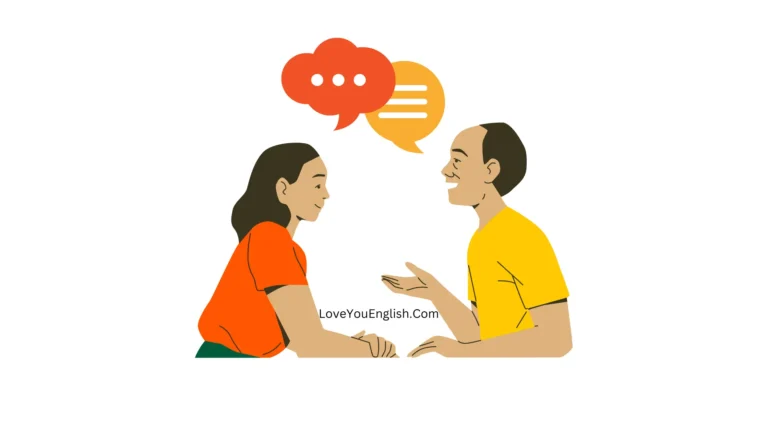Conversation in English About Education and Learning
Alex: Hi, Jamie! How’s it going?
Jamie: Hey, Alex! I’m doing well, thanks. How about you?
Alex: I’m great! I’ve been thinking a lot about education and learning recently. It seems like there’s always something new to explore in these areas.
Jamie: Absolutely! Education is such a broad field. What specifically have you been pondering?
Alex: Well, I’ve been thinking about how education has evolved over the years. For instance, the shift from traditional classroom settings to online learning platforms. Have you noticed how much more flexible education has become?
Jamie: Yes, definitely. Online learning has made education more accessible to people who might not have had the opportunity otherwise. It’s fascinating how technology has transformed the way we learn.
Alex: True. And the rise of online resources, like MOOCs and educational YouTube channels, has democratized access to knowledge. Do you think this has improved overall educational outcomes?
Jamie: I think it has the potential to. With access to a variety of resources, learners can tailor their education to their needs and interests. However, I also believe it comes with challenges, such as ensuring the quality of information and maintaining motivation.
Alex: That’s a good point. The abundance of information online can sometimes be overwhelming, and not all sources are reliable. How do you think learners can navigate this?
Jamie: I’d say critical thinking is key. Learners need to develop skills to evaluate the credibility of sources and cross-reference information. It’s also important for educators to teach these skills as part of the curriculum.
Alex: Absolutely. Speaking of educators, do you think the role of teachers has changed with the rise of digital learning?
Jamie: Definitely. Teachers are now more like facilitators of learning rather than just providers of information. They guide students in using digital tools effectively and help them develop skills for independent learning.
Alex: That makes sense. And it seems like there’s a growing emphasis on personalized learning. How do you see this trend impacting education?
Jamie: Personalized learning is great because it allows students to learn at their own pace and focus on areas where they need more help. It can lead to better engagement and understanding. However, it also requires significant resources and planning to implement effectively.
Alex: True, and it also highlights the need for adaptive technologies that can support diverse learning styles. Have you seen any interesting developments in this area?
Jamie: Yes, there are some impressive adaptive learning platforms that use algorithms to tailor content to individual students’ needs. For example, they can adjust the difficulty of tasks based on a student’s performance or provide additional resources on topics where they struggle.
Alex: That’s really exciting! Another aspect I’ve been curious about is lifelong learning. How do you think the concept of lifelong learning fits into today’s educational landscape?
Jamie: Lifelong learning is more relevant than ever. With the rapid pace of change in technology and the job market, it’s crucial for individuals to continually update their skills. Many people are now engaging in continuous professional development or pursuing personal interests through online courses.
Alex: It’s great to see that people are embracing learning beyond traditional schooling. Do you think employers are supportive of this shift?
Jamie: Many employers are indeed supportive. They recognize that ongoing learning helps employees stay competitive and adaptable. Some companies even offer training programs or educational benefits to encourage professional growth.
Alex: That’s encouraging. On a different note, how do you think learning environments impact student outcomes? For example, the difference between a traditional classroom and a more modern, collaborative space.
Jamie: Learning environments play a significant role. Modern, collaborative spaces can foster more interactive and engaging learning experiences. They often encourage group work, creativity, and hands-on activities, which can enhance understanding and retention.
Alex: I agree. I’ve also read about the importance of a positive and supportive learning environment. How can educators create such an environment?
Jamie: Creating a supportive environment involves building strong relationships with students, fostering a growth mindset, and providing constructive feedback. It’s also important to create a safe space where students feel comfortable expressing themselves and taking risks.
Alex: That’s crucial for effective learning. Do you have any thoughts on the future of education? Where do you think it’s headed?
Jamie: The future of education seems to be heading towards even greater integration of technology and personalized learning. We might see more immersive experiences, like virtual reality classrooms, and continued emphasis on skills that are relevant in the modern world, such as digital literacy and critical thinking.
Alex: It’s exciting to think about all the possibilities. One last question: What advice would you give to someone looking to enhance their learning experience, whether they’re a student or a lifelong learner?
Jamie: I’d recommend staying curious and open-minded. Explore different learning methods and find what works best for you. Set specific goals and track your progress. And don’t hesitate to seek out resources or communities that can support your learning journey.
Alex: That’s fantastic advice. Thanks for such a thought-provoking discussion, Jamie!
Jamie: You’re welcome, Alex! It was great talking with you. I always enjoy discussing education and learning.
Alex: Me too. Let’s catch up again soon!
Jamie: Definitely. Have a great day!
Alex: You too!
Read more conversations:
Conversation in English About Education and Learning
Morgan: Hi, Taylor! How’s your day going?
Taylor: Hey, Morgan! It’s going well, thanks. Just finishing up some grading. How about you?
Morgan: Not too bad! I’ve been reflecting on different aspects of education lately, especially the role of educational technology. What are your thoughts on how tech is reshaping learning?
Taylor: It’s quite a transformation, isn’t it? Technology has certainly opened up new avenues for learning, from interactive tools and educational apps to virtual classrooms. It’s making education more engaging and accessible in many ways.
Morgan: Absolutely. One thing I’ve noticed is how technology can cater to various learning styles. For example, visual learners can benefit from videos and infographics, while auditory learners might prefer podcasts and lectures.
Taylor: That’s a great point. Technology allows for a more customized learning experience, which can help address individual needs more effectively. It’s also interesting to see how adaptive learning technologies are being used to provide personalized feedback.
Morgan: Yes, adaptive learning platforms are fascinating. They adjust the difficulty of tasks based on student performance, which can really help with mastering concepts at one’s own pace. Do you think there are any downsides to relying heavily on technology in education?
Taylor: There are definitely some concerns. Over-reliance on technology can sometimes lead to a lack of face-to-face interaction, which is crucial for developing social and communication skills. Additionally, there’s the issue of screen time and ensuring that students are using technology in a balanced way.
Morgan: That’s a valid concern. Balance is key. Speaking of balance, how do you think traditional teaching methods compare with modern approaches? For instance, direct instruction versus project-based learning.
Taylor: Traditional methods like direct instruction can be effective for conveying foundational knowledge. However, project-based learning often encourages deeper understanding by allowing students to explore and apply concepts in real-world contexts. Each method has its strengths, and a blended approach can sometimes be the most effective.
Morgan: I agree. Blending methods can offer the best of both worlds. I’ve also been thinking about how assessment practices are evolving. For example, moving from standardized testing to more formative assessments. What are your thoughts on this shift?
Taylor: Formative assessments are valuable because they provide ongoing feedback and help teachers understand how students are progressing. This approach can be more informative than a single high-stakes test. It allows for adjustments to teaching strategies and supports more personalized learning.
Morgan: Exactly. It also aligns well with the idea of continuous improvement. But with this shift, how can educators ensure that assessments are fair and comprehensive?
Taylor: It’s important to use a variety of assessment methods to get a complete picture of student learning. This can include quizzes, projects, presentations, and peer assessments. Additionally, setting clear criteria and involving students in the assessment process can help ensure fairness.
Morgan: That makes sense. I’ve also been exploring the concept of lifelong learning and how it’s becoming a crucial part of personal and professional development. What are your thoughts on the importance of lifelong learning?
Taylor: Lifelong learning is essential in today’s rapidly changing world. It helps individuals stay relevant in their careers and adapt to new challenges. Moreover, it fosters personal growth and curiosity. Encouraging a mindset of continuous learning can lead to more fulfilling and dynamic lives.
Morgan: I completely agree. It’s amazing how many resources are available now for lifelong learners, from online courses to workshops and seminars. Do you think educational institutions are doing enough to promote lifelong learning?
Taylor: Some institutions are making strides by offering flexible learning options and continuing education programs. However, there’s always room for improvement. Integrating lifelong learning principles into the core of educational philosophy could help foster a culture of ongoing growth.
Morgan: That’s a great idea. Encouraging students to see education as a lifelong journey rather than a finite process could have a huge impact. How do you think educators can instill this mindset in students?
Taylor: One way is to model lifelong learning behaviors ourselves. Showing enthusiasm for learning new things and sharing personal experiences can inspire students. Additionally, incorporating projects or assignments that require independent research and exploration can help cultivate curiosity.
Morgan: That’s a fantastic approach. It’s all about making learning an integral and exciting part of life. Before we wrap up, do you have any thoughts on the future of education?
Taylor: I think we’ll continue to see increased integration of technology, with a focus on personalized and experiential learning. There will likely be a greater emphasis on skills that are relevant in a digital world, like critical thinking and problem-solving. Overall, education will need to adapt to prepare students for a constantly evolving future.
Morgan: Exciting times ahead! Thanks for this insightful conversation, Taylor. It’s been great discussing these topics with you.
Taylor: Likewise, Morgan. I always enjoy our discussions on education. Let’s catch up again soon!
Morgan: Definitely. Have a great day!
Taylor: You too!




